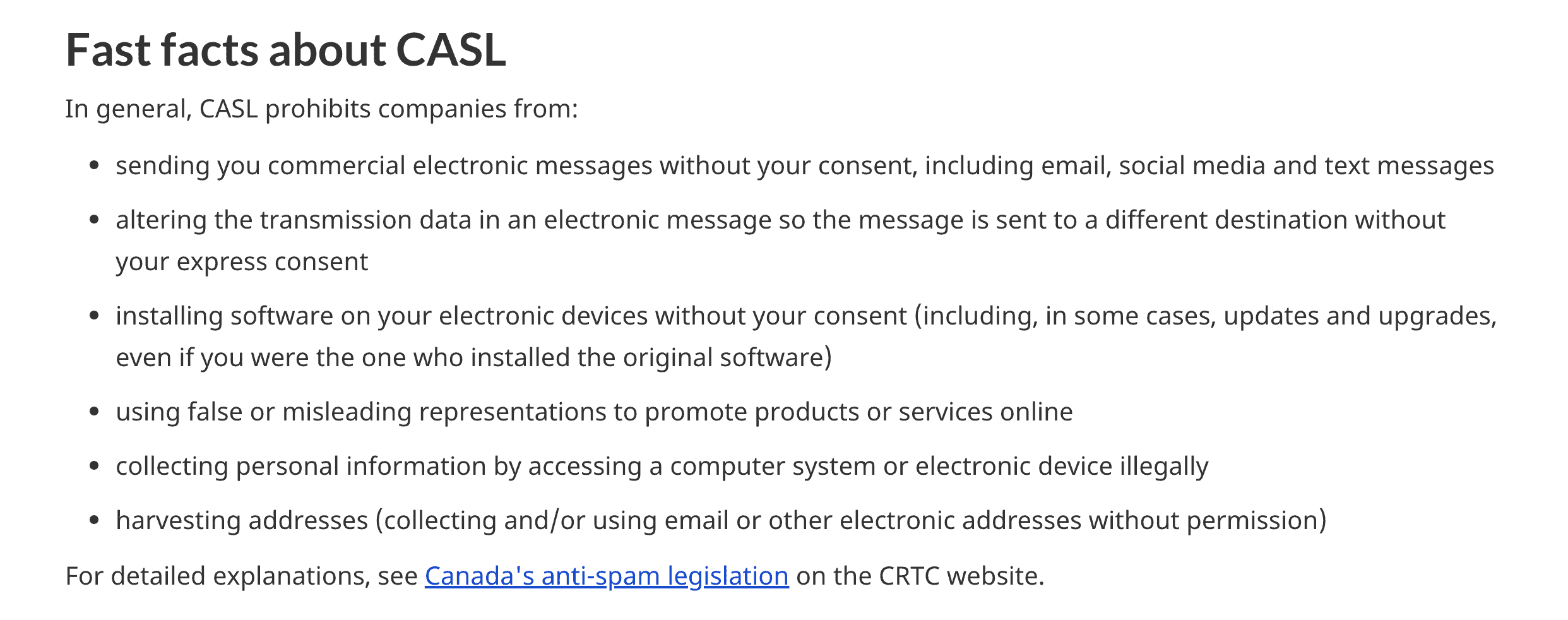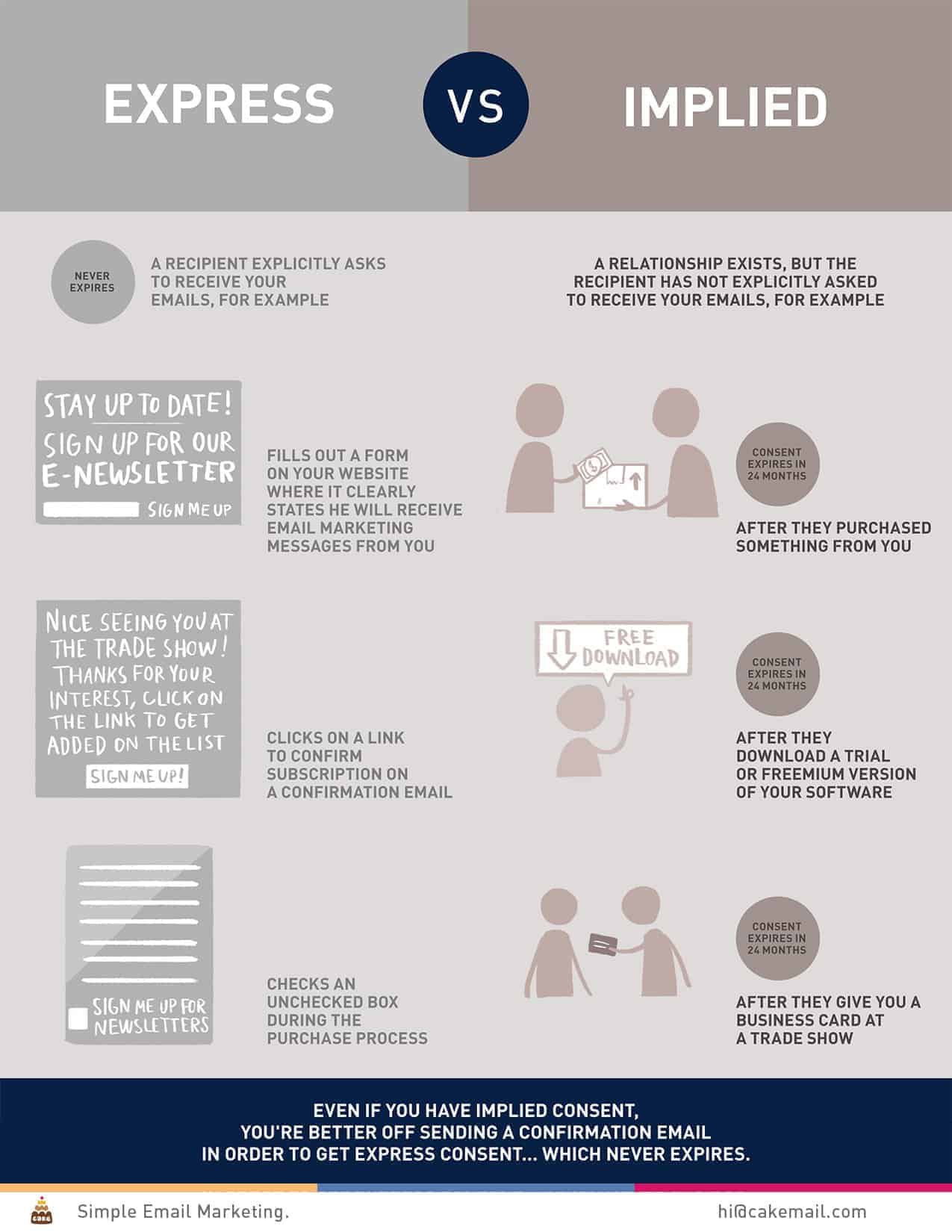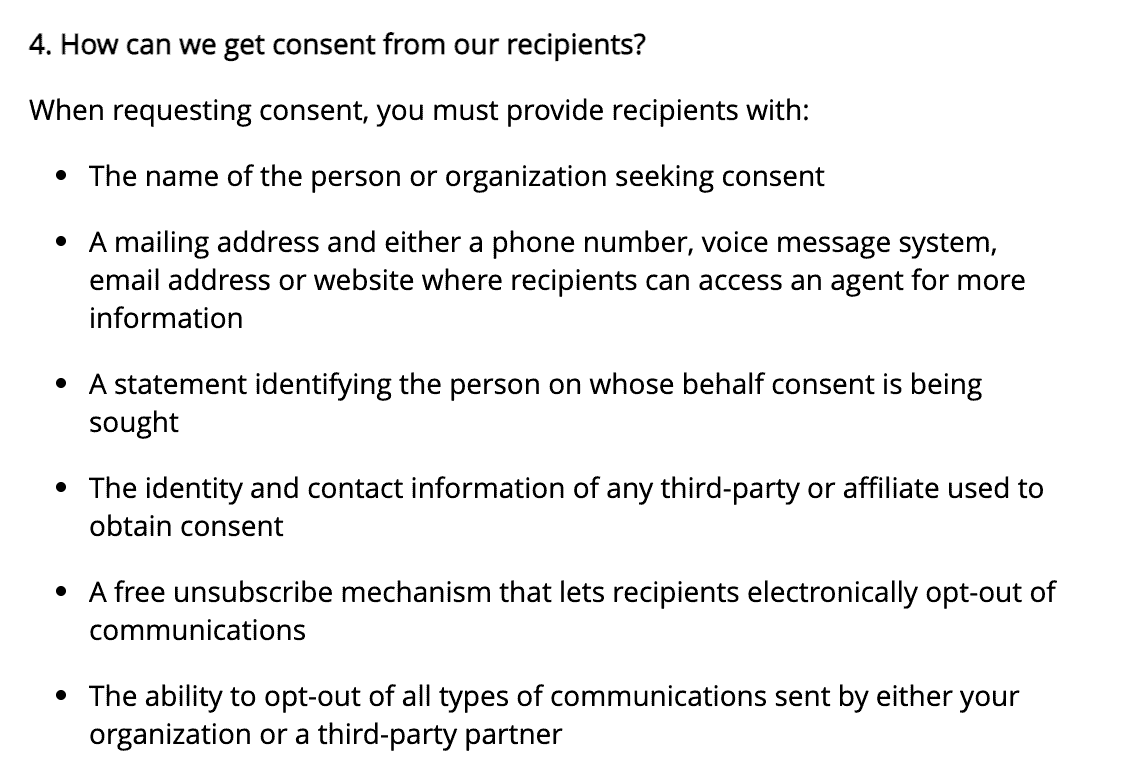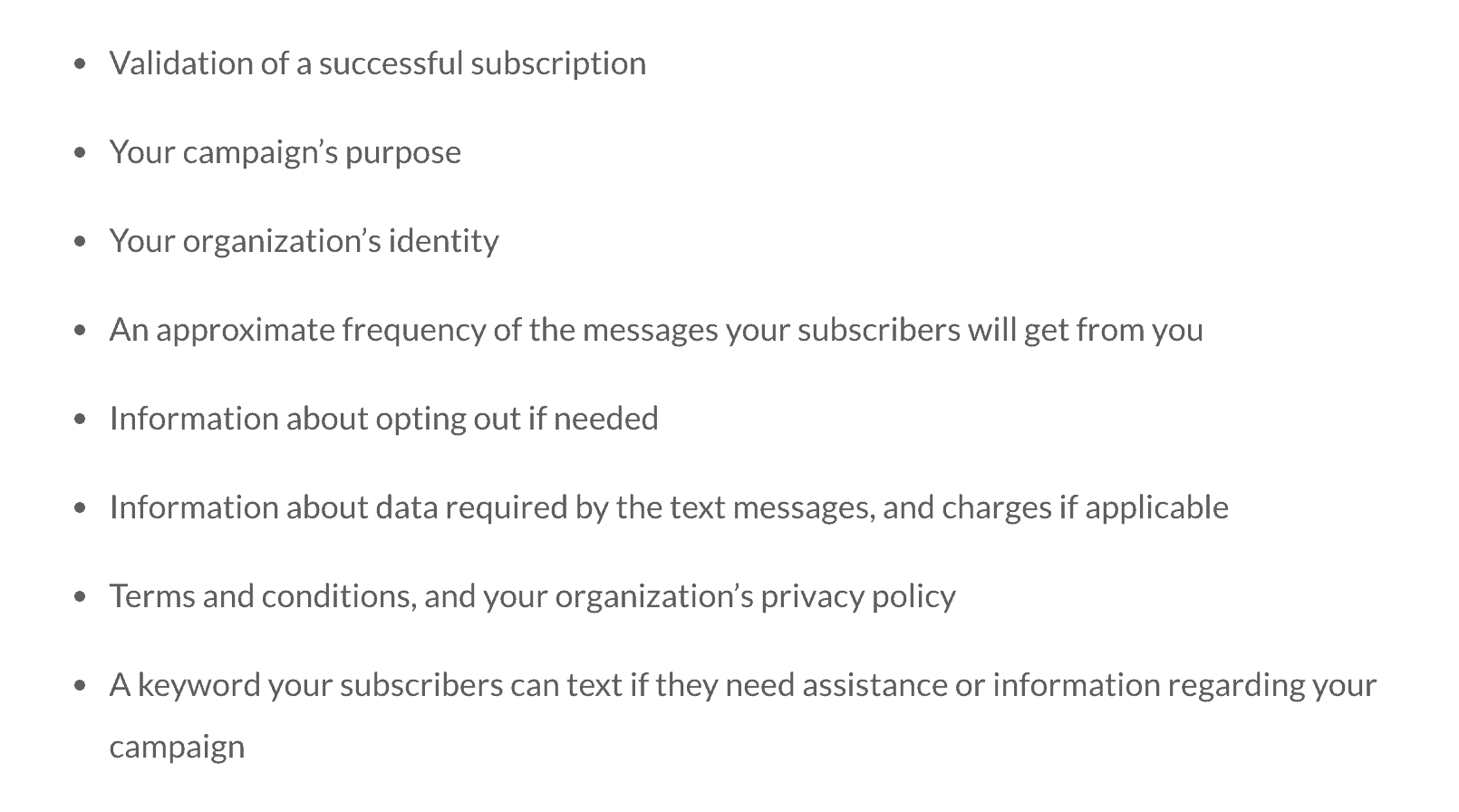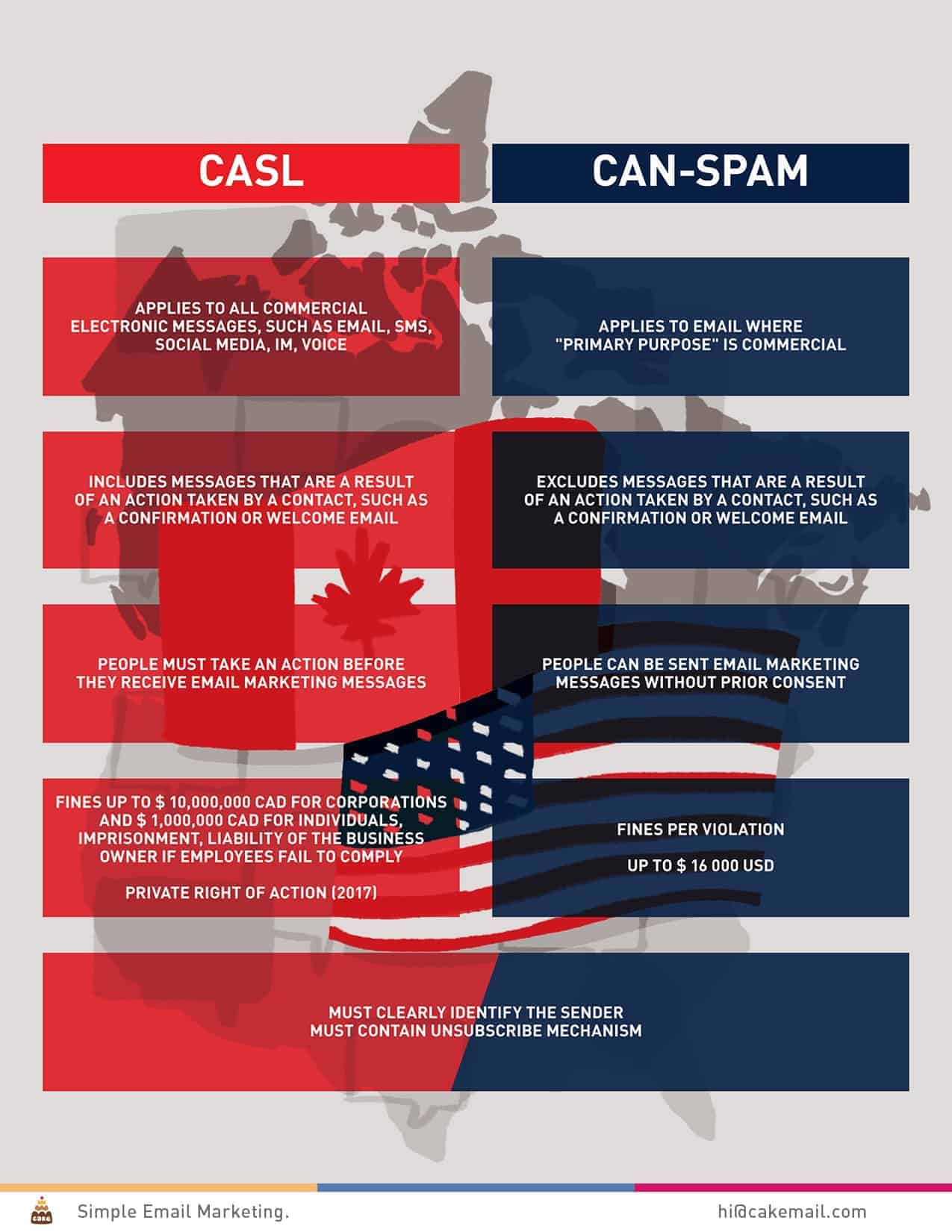CASL laws, or Canada’s Anti-Spam Legislation, are the federal laws regarding sending spam to Canadians. Any business that has Canadian clients or operates in Canada must follow these laws.
For most businesses, the CASL regulations will be relevant mostly in a marketing context. They specifically apply to both text campaigns and email campaigns.
If you are unaware of the various CASL rules, then you could accidentally violate them and face consequences, such as fines. By familiarizing yourself with the laws, you can avoid those consequences.
As a bonus, following the CASL laws also helps you maintain a favorable reputation with your customers. After all, customers or potential customers won’t feel as if you are targeting them with excessive messages, so they are less likely to get annoyed. Following the CASL laws will help you find the perfect balance between sending customers messages they want to receive without sending them too many and annoying them.
What is Canada’s Anti-Spam Legislation?
Canada’s Anti-Spam Legislation (CASL) outlines the restrictions that all businesses must follow when contacting customers or potential customers. Legislators first introduced the law in April 2009 before reintroducing it in May 2010. It has been enforced since July 1, 2014.
CASL laws are enforced by the Office of the Privacy Commission of Canada (OPC), the Canadian Radio-Television and Telecommunications Commission (CRTC), and the Competition Bureau.
The most relevant part of the CASL rules for most businesses is the prohibition against sending commercial electronic messages without the recipient giving consent. This applies to text messages, emails, and social media.
If it helps, you can think of CASL as the Canadian equivalent of the TCPA.
Keep in mind that the information about the CASL laws in this article is not intended to be comprehensive. We recommend you seek legal advice to ensure you remain compliant.
The individual pieces of Canada’s Anti-Spam Legislature (CASL Laws)
As you read about Canada’s anti-spam law, you will notice a few terms that you may be unfamiliar with. The following definitions should help you understand them:
- Commercial Electronic Messages (CEM): This is any electronic message that encourages the recipient to participate in commercial activity. Examples include text messages or emails advertising a promotion or coupon.
- Express Consent: Express consent refers to when the recipient explicitly consents to receive the messages, either in writing or orally.
- Implied Consent: Implied consent refers to the fact that companies don’t need to get express consent if: a) There is an existing non-business or business relationship, or b) The recipient publishes or discloses their contact information conspicuously and doesn’t indicate that they want to opt-out of receiving communications, or c) You can have implied consent to send a single message if you get a genuine referral.
- Written Consent: This is any method of gaining explicit consent that is done in writing. It can be in person with a paper and pen or be electronic.
- Existing Business Relationship: As mentioned, existing business relationships give implied consent. These are when the recipient bought a product, good, or service, or did another type of business with you within the past 24 months. It also applies if they applied or made an inquiry within the past six months.
- Existing Non-Business Relationship: This also implies consent. This only applies to registered political organizations and charities. For this type of relationship, the recipient must have been somehow involved (such as via a donation or volunteer work) in the last 24 months.
- Opt-In: Opting in is the process of expressing consent to receive commercial electronic messages.
- Opt-Out or Unsubscribe Request: This is when the recipient removes their consent to receive messages, indicating they no longer want to receive them. You must follow their request, or you will violate CASL rules.
Importantly, the CASL regulations include any type of commercial electronic messages. This primarily refers to text marketing and email marketing.
The requirement to get permission
The crucial part of the CASL law is that companies need to get consent from recipients before sending a CEM.
The consent can be electronic, in writing, or oral.
As part of your request for consent, you have to provide recipients with some important information. This includes details about your organization as well as the ability to unsubscribe or opt-out.
The most common method of getting consent in compliance with CASL is via a checkbox. But it is important to remember that you CANNOT precheck this box.
Important exceptions to the need for express consent
While Canada’s anti-spam law requires express consent for most commercial electronic messages, there are a few exceptions.
The most common exception that applies to businesses is the exception for transactional messages.
For example, if you are sending a message about warranty information or a recall, it would be a transactional message. Transactional messages also include messages related to purchases and deliveries.
Importantly, while you don’t need to get additional consent for these transactional messages, you do still need to identify your organization and offer an unsubscribe option.
CASL opt-in examples
It doesn’t have to be overwhelming to give customers the chance to opt-in and remain compliant with CASL. There are a few simple strategies you can use to get consent.
The simplest option is to simply include a check box for the customer to give consent when they submit their email information via your lead generation tool. The following image provides an example of this.
You can also give your potential subscribers several choices, as this offers more control. These types of CASL opt-in examples are also better for your company’s reputation and overall email marketing campaigns. After all, if you let recipients control what topics they receive messages about, they are less likely to unsubscribe from all of them. The following image offers an example:
Other options include:
- Adding forms with checkboxes to the footer of your website or blog.
- Adding forms with consent checkboxes to your pop-ups.
Major trends influencing Canada’s Anti-Spam Law (CASL Law)
As mentioned, for most businesses, the biggest impact of Canada’s Anti-Spam Law is on marketing.
When it was first enacted, email marketing was the major application of CASL law for most companies. But now, with SMS marketing on the rise, businesses also have to ensure that they are compliant with any text messages they send.
That is especially important because the popularity of SMS marketing comes from both the perspective of the business and that of the consumer. If CASL isn’t already at the top of your mind as you craft your SMS marketing strategies, it needs to be.
How is CASL different from CAN-SPAM?
When discussing CASL and regulations regarding text messages and email campaigns, you are also likely to come across CAN-SPAM. Given that both of these are Canadian laws regulating spam, it is common to wonder what separates them from each other.
As the above infographic indicates, there are a few primary differences between CASL law and CAN-SPAM.
What it applies to
The first major difference is what each of these regulations applies to.
CAN-SPAM only applies to emails, and those emails must have a commercial “primary purpose.” By contrast, CASL regulations apply to any type of commercial message, including SMS messages, social media messages, voice messages, and instant messages.
Additionally, CAN-SPAM specifically excludes messages that you send in response to an action the recipient takes, such as welcome or confirmation emails. CASL includes these types of emails. However, some of those emails will already have implied consent under CASL due to an existing business or non-business relationship.
Email marketing and consent
CAN-SPAM doesn’t require consent to send someone an email marketing message, but CASL does. It is worth noting, however, that implied consent is an option in addition to express consent.
Potential penalties
The potential penalties for violating CASL are much higher than those for violating CAN-SPAM. The fines for CAN-SPAM are $16,000 USD per violation. By contrast, CASL violations can lead to fines of up to $1 million CAD for individuals or $10 million CAD for corporations.
Important similarities
Both CAN-SPAM and CASL apply to email marketing, are valid across Canada, and require you to offer an opt-out or unsubscribe method.
Both of these regulations also promote choice for consumers and transparency. They also all require you to make sure your internal processes are thoughtful and come with heavy potential fines.
Summary and why your business should care about Anti-Spam Law CASL
The CASL law, Canada’s Anti-Spam Legislature, is designed to protect consumers from excessive spam via electronic messages. The most important takeaway for businesses is that you must get consent from consumers before you send them emails or text messages. There are a handful of situations where you will automatically have implied consent. Most of the time, however, you will need explicit consent, such as via a checkbox when someone submits their email address or phone number.
It is crucial that you follow all of the CASL rules, as violating them can lead to very hefty fines. It could also hurt your company’s reputation.


